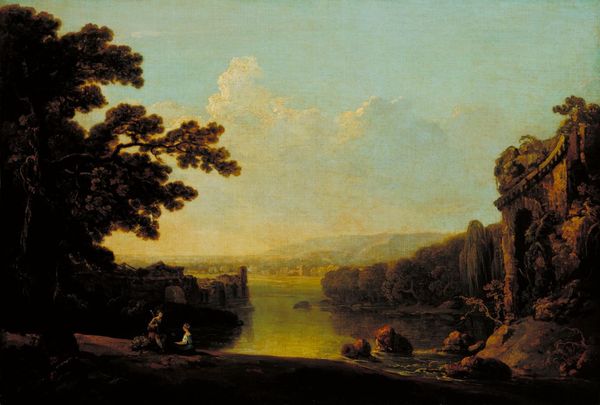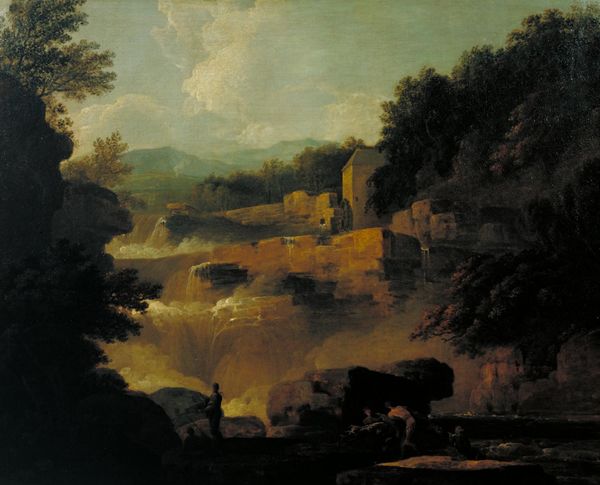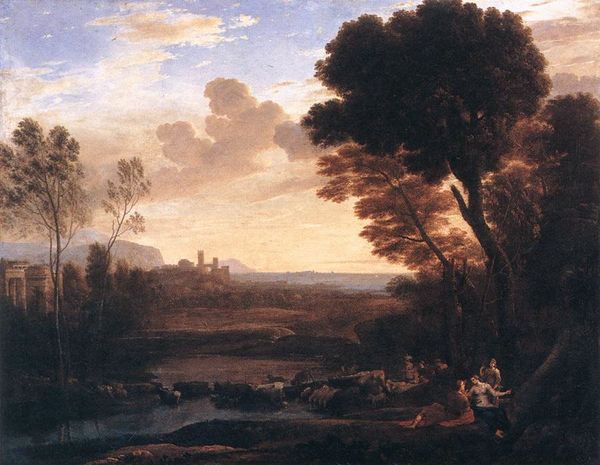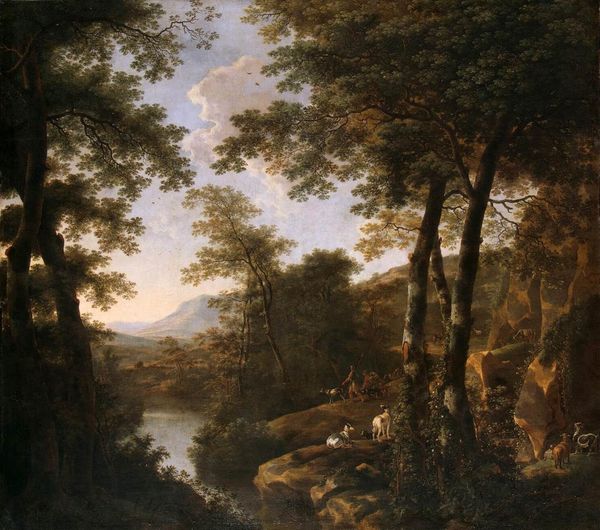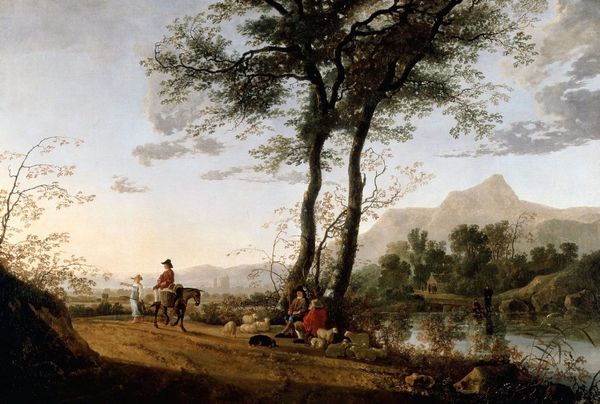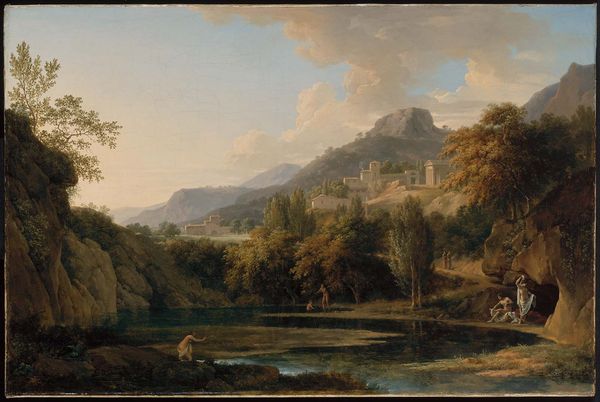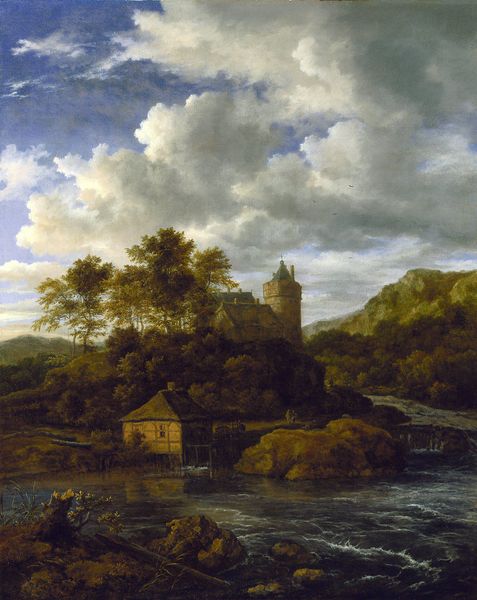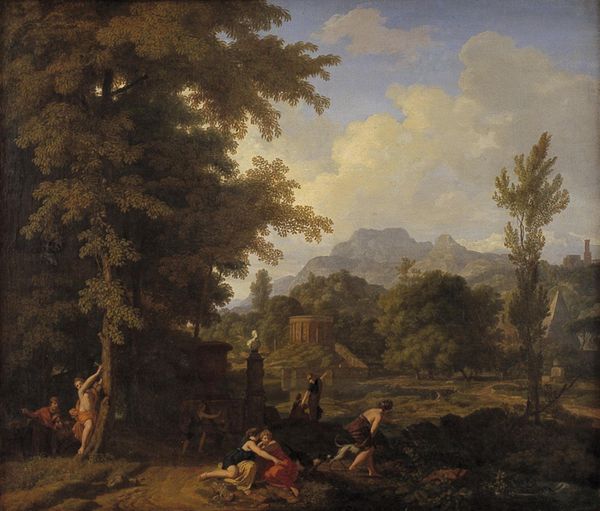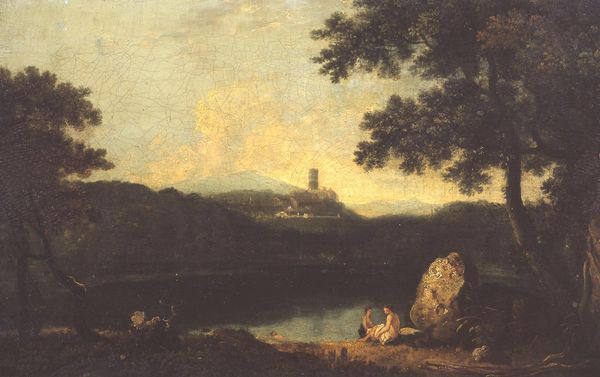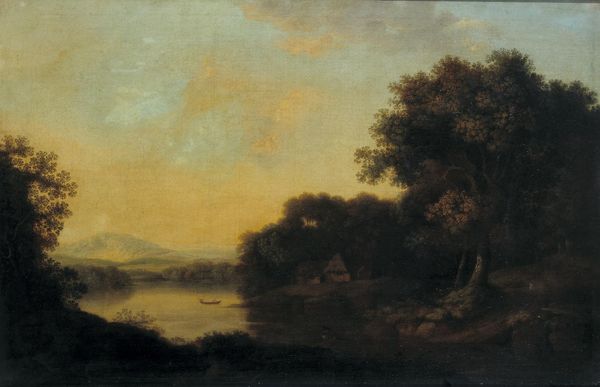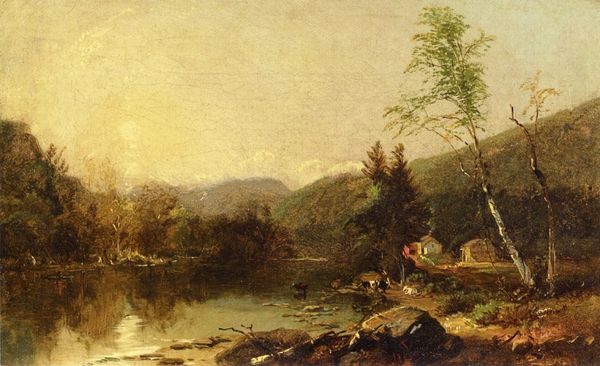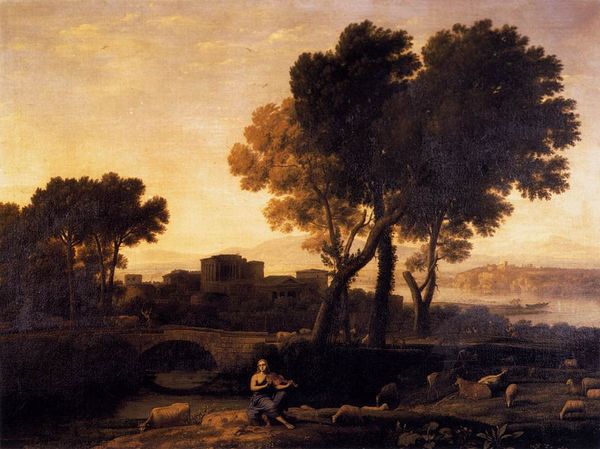
painting, oil-paint
#
tree
#
sky
#
baroque
#
painting
#
atmospheric-phenomenon
#
oil-paint
#
landscape
#
river
#
figuration
#
form
#
oil painting
#
column
#
cloud
#
natural-landscape
#
men
#
water
#
cityscape
#
realism
Dimensions: 85 x 62 cm
Copyright: Public domain
Editor: We’re looking at “The Mill,” an oil painting by Claude Lorrain from 1631, currently residing at the Museum of Fine Arts in Boston. It feels like a scene steeped in contrasts; the dark, imposing trees on the left are set against a hazy, luminous sky. How do you interpret this work, considering its visual construction? Curator: Formally speaking, observe how Lorrain employs a tripartite division. The foreground's darkness acts as a repoussoir, compelling the eye towards the light-saturated background. The recession into space is carefully orchestrated through tonal gradations, isn't it? The architectural structures punctuate the middle ground, providing a structural counterpoint to the organic forms. What role do you think the brushstrokes play in conveying the mood? Editor: They definitely contribute to the hazy, almost dreamlike quality, particularly in the sky. There’s a softness to the application that seems to diffuse the light. Are the figures just compositional elements? Curator: Indeed. Consider them as staffage; their primary purpose is to animate the scene and provide scale, but they also add to the work’s meaning through visual complexity. The interplay of light and shadow – chiaroscuro – sculpts the forms, enhancing the overall dynamism, no? Editor: Yes, absolutely. It’s amazing how Lorrain creates depth using such subtle variations in tone and texture. The figures become part of that overall composition. Curator: Precisely. By isolating specific formal aspects, such as Lorrain’s use of light and dark and his placement of objects, we move beyond narrative, focusing instead on his technical skill in creating this unified landscape composition. The artwork becomes its own reality. Editor: This deeper focus on composition is eye-opening. I never considered looking at it so closely and from a purely formal perspective! Curator: Understanding these artistic principles opens us up to more fulfilling experiences in art appreciation.
Comments
No comments
Be the first to comment and join the conversation on the ultimate creative platform.
